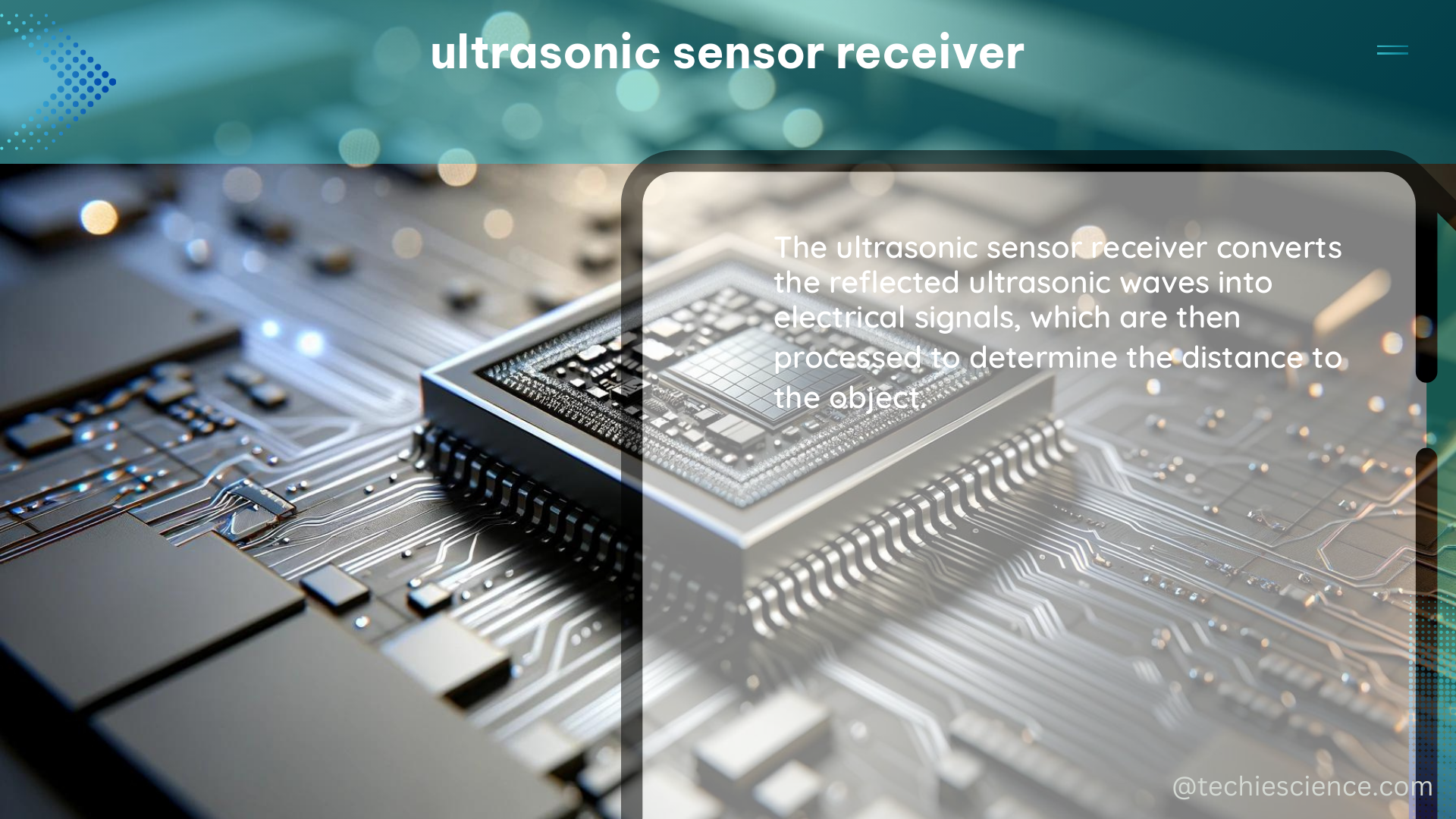The ultrasonic sensor receiver is a crucial component in distance measurement using ultrasonic sensors. The HC-SR04 ultrasonic sensor, for instance, has a measuring angle of less than 15 degrees, an operating frequency of 40 kHz, and operates at a voltage of 5V with a current of 15mA. Its minimum range is 2cm or 1 inch, and the maximum range is 400cm or 13 feet with an accuracy of 3mm.
Understanding the Working Principle of Ultrasonic Sensor Receiver
The working principle of the ultrasonic sensor involves the transmission and reception of ultrasonic waves. The sensor emits ultrasonic waves using a transmitter, and the receiver listens for reflected waves. The time taken for the wave to travel to the object and back is measured, and the distance is calculated using the formula: distance = (speed of sound in air x time taken) / 2.
Exploring the HC-SR04 Ultrasonic Sensor

The HC-SR04 ultrasonic sensor has four pins: VCC, GND, Trig, and Echo. VCC and GND are connected to the 5V and GND pins on the Arduino, respectively. The Trig pin is connected to any digital Arduino pin, and the Echo pin is connected to the D2 pin of the Arduino. The Trig pin is used to send the ultrasound wave, and the Echo pin is used to listen for the reflected signal.
Measuring Distance with the HC-SR04 Ultrasonic Sensor
The ultrasonic sensor can take readings very fast, but if you want to take a reading every 0.5 seconds, you can add a delay or a time counter into the program. The counting starts when the echoPin (input) gets the state HIGH, and it stops when it gets the state LOW. The time difference between these two states is used to calculate the distance.
The HC-SR04 ultrasonic sensor can detect distances from 2cm to 400cm, but if the measured distance is over 4 meters, it won’t give correct values and will show random numbers. The sensor can’t turn on 24/7 for everyday use without getting hot or burning, as it’s an electronic device.
Adjusting the Readings
You can change the absolute reading to a relative distance on the display using a potentiometer. You need to modify the code to compensate for the initial reading, probably with a simple arithmetic operation.
Factors Affecting the Accuracy of Ultrasonic Sensor Receiver
The accuracy of the ultrasonic sensor can be affected by various factors, including temperature, humidity, and the angle of incidence of the ultrasonic wave. The velocity of sound through air varies by temperature, and in dry air at 20°C (68°F), the speed of sound is 343 m/s, or a kilometer in 2.91 s.
Temperature Compensation
The speed of sound in air varies with temperature, and this can affect the accuracy of the distance measurement. To compensate for temperature changes, you can use a temperature sensor, such as a thermistor or a digital temperature sensor, to measure the ambient temperature and adjust the speed of sound calculation accordingly.
Humidity Compensation
Humidity can also affect the speed of sound in air, and this can impact the accuracy of the distance measurement. To compensate for humidity changes, you can use a humidity sensor to measure the ambient humidity and adjust the speed of sound calculation accordingly.
Angle of Incidence Compensation
The angle of incidence of the ultrasonic wave can also affect the accuracy of the distance measurement. If the object is not perpendicular to the sensor, the reflected wave may not be detected by the receiver, or it may be detected at a different angle, leading to an inaccurate distance measurement. To compensate for this, you can use multiple ultrasonic sensors positioned at different angles to triangulate the position of the object.
Conclusion
In summary, the ultrasonic sensor receiver is a crucial component in distance measurement using ultrasonic sensors. The HC-SR04 ultrasonic sensor has a measuring angle of less than 15 degrees, an operating frequency of 40 kHz, and operates at a voltage of 5V with a current of 15mA. Its minimum range is 2cm or 1 inch, and the maximum range is 400cm or 13 feet with an accuracy of 3mm. The sensor emits ultrasonic waves using a transmitter, and the receiver listens for reflected waves. The time taken for the wave to travel to the object and back is measured, and the distance is calculated using the formula: distance = (speed of sound in air x time taken) / 2.
References:
– Distance measurement using Ultrasonic sensor and Arduino – GeeksforGeeks, https://www.geeksforgeeks.org/distance-measurement-using-ultrasonic-sensor-and-arduino/
– Ultrasonic Sensor HC-SR04 and Arduino – Complete Guide – How to Mechatronics, https://howtomechatronics.com/tutorials/arduino/ultrasonic-sensor-hc-sr04/
– Ultrasonic Sensing Basics (Rev. D) – Texas Instruments, https://www.ti.com/lit/an/slaa907d/slaa907d.pdf?ts=1704718136760

The lambdageeks.com Core SME Team is a group of experienced subject matter experts from diverse scientific and technical fields including Physics, Chemistry, Technology,Electronics & Electrical Engineering, Automotive, Mechanical Engineering. Our team collaborates to create high-quality, well-researched articles on a wide range of science and technology topics for the lambdageeks.com website.
All Our Senior SME are having more than 7 Years of experience in the respective fields . They are either Working Industry Professionals or assocaited With different Universities. Refer Our Authors Page to get to know About our Core SMEs.